Stephen W. Hiemstra's Blog, page 242
August 10, 2016
Dichosos los que Tiene Hambre y Sed
Dichosos los que Tiene Hambre y Sed
Por Stephen W. Hiemstra
Almuerzo para el Alma, Miércoles, 10 de Agosto, 2016, Iglesia Presbiteriana de Trinidad, Herndon, Virginia
Bienvenido
Buenos tarde. Bienvenido al Almuerzo para el Alma. Mi nombre es Stephen Hiemstra. Soy un voluntario pastoral de la Iglesia Presbiteriano de Centreville y también un autor cristiano. En el sermón de hoy continuamos nuestro estudio de las Beatitudes.
¿Cuáles son tus prioridades? Nuestra Beatitud de hoy dice que debemos tener hambre y sed para la justicia de Dios.
Oración
Vamos a orar.
Padre santo. Gracias por tu presencia entre nosotros esta mañana. Agradecemos que tu palabra todavía mueva nuestros corazones y estimula nuestras mentes. Haga tu presencia especialmente claro en este momento y este lugar. En el poder de tu Espíritu Santa, abran nuestros ojos y danos oídos que oyen. En el precioso nombre de Jesucristo, Amen.
Texto
El texto de hoy viene del Evangelio de Mateo 5:6. Eso es la cuarta Beatitud y una parte de la introducción del Sermón de la Montaña. Escuchan la palabra de Dios:
“Dichosos los que tienen hambre y sed de justicia, porque serán saciados” (Mateo 5:6 NVI).
La palabra del Senior. Gracias a Dios.
Introducción
En 2013, estuve graduado del seminario y escribí mi primer libro, Una Guía Cristiana a la Espiritualidad, en inglés. Este libro fue escrito pero no tuve amigos en este negocio de publicación, no tuve un editor, ni tampoco un contrato de publicación. Entonces, tenía que asistir una conferencia y hablar con los publicadores. Normalmente, negocios de este tipo requiere muchas preparaciones; por el mínimo, necesitaba a tener unas tarjetas de visita que describir mi oficina de trabajo, mi posición, y mi información de conectar. Todas las cosas fueron problemático porque estuve nuevo graduado, no tuve trabajo; y tuve solamente un libro para vender y fui desconocido. ¿Qué haría? (2X)
¿Que fue la repuesta a la problema de ninguna tarjetas de visita? Sin una oficina de trabajo, empezó a escribir mis prioridades: eslavo de Cristo, esposo, padre, pastor voluntario (o como Pablo dijo: fabricante de tiendas), escritor, y orador. Por primero, me sentía un poco vergüenza porque estuve sin trabajo pero mis tarjetas de visita crecían a ser un tópico de conversación, especialmente entre mis hijos y sus amigos. Inmediatamente, tuve una oportunidad a discutir las prioridades de la vida con mis hijos en un contexto fresco y también con otras personas.
Las prioridades—Dios, esposo, hijos, trabajo—son importante porque si se cambia esta lista de prioridades, o pérdida alguna de ellos, malas cosas pueden pasar. ¿Que pondría pasar, por ejemplo, si yo pongo mi trabajo en la plaza de Dios en esta lista y perdía mi trabajo? O tal vez, ¿qué paso si yo pongo mi esposa en la plaza de Dios y ella me dejó? Estos ejemplos no son muy hipotético porque la primera razón para suicidio entre los ancianos en américa de hoy es perdía de trabajo y la primera razón para suicidio entre los jóvenes bajo de vente cinco años es pérdida de un otro significativo. Malas cosas pasan cuando tenemos prioridades inapropiadas o desorganizadas.
En la cuarta Beatitud Jesucristo dijo:
“Dichosos los que tienen hambre y sed de justicia, porque serán saciados” (Mateo 5:6 NVI).
Contexto
¿Para qué tienes hambre y sed? ¿Para qué le apasiona?
Este tema de necesidades muy profundo—hambre y sed—es en contrario de la provisión y abundancia de Dios en el Evangelio de Juan. Allí, Jesucristo revelo si mismo primero a una pareja que tuvieron una boda sin suficiente vino para cumplir el estándar de la comunidad para la hospitalidad—eso es como hoy si usted no tiene ropas apropiada para visitar una restaurante con clase con tu familia después un funeral. En este contexto, Jesús proveyó el vino.
En nuestro contexto, nuestros debilidades son contrastado con el súper-abundancia de Dios en el Evangelio de Juan—la abundancia de vino en la boda de Canaán (Juan 2:1-11), la abundancia del pan cuando Jesús alimenta los cinco mil personas (Juan 6:5-14), y la abundancia del pez cuando Jesús revela si mismo a los apostales por la última vez en Galilea (Juan 21:3-12). Ellos alimentos de cada día ilustran la generosidad marca comercial de Dios que vimos la primera vez en el jardín de Edén donde no hubo hambre ni sed. Allí, tuvimos una relación muy íntima con Dios mismo.
¿Sentías el profundo simbolismo aquí en esta cuarta Beatitud? ¿Estas apasionadas hoy días para Dios? Como Jesucristo dijo:
“Dichosos los que tienen hambre y sed de justicia, porque serán saciados” (Mateo 5:6 NVI).
Análisis
Si usted es apasionado para Dios o no, nuestra pasión indica las prioridades en nuestras vidas. Nuestras emociones protegen nuestros sentidos, nuestras identidades, y nuestras prioridades. En otras palabras, nos enojamos por las cosas que nos parecen importantes.
En la teología, esto concepto es llamado como “la teoría cognitiva de las emociones” (2X) (Elliott 2006, 31) y la idea es que también Dios se convierte en enojado solamente (2X) cuando su ley es transgredida. En la Biblia, el apóstalo Pablo escribe:
“Ciertamente, la ira de Dios viene revelándose desde el cielo contra toda impiedad e injusticia de los seres humanos” (Rom 1:18 NVI)
Entonces, nuestras emociones revelan las prioridades reales de nuestros corazones.
¿Tienes hambre y sed para Dios antes otras cosas? (2X)
Fínale
En mi historia mencionada antes,imprimí las tarjetas de visita con mis prioridades—eslavo de Cristo, esposo, padre, fabricante de tiendas, escritor, y orador—y asistí una conferencia donde encontré una impresa de publicación que ofrecía un contrato para publicar mi libro. Al final, yo no acepte este contracto pero empecé a publicar libros independientes por mi propia empresa.
Oración Para Terminar
Oramos.
Precioso Senior,
En nuestra finitud, nuestro quebrantamiento, lloramos para tu rectitud, oh Dios. Como las hambres agarra para el pan y los sedientos lloran para agua, buscamos para su justicia donde ni otro es disponible, ni otro puede ser encontrado. Tu santa Biblia se recuerda nos que tu estas aquí, siempre disponible, y compasionado para siempre. En medio del desierto de nuestras emociones y en la tierra seca de nuestras mentes, sana nuestras heridas, aliviar nuestras penas, y salvarnos de nuestros pecados. En el poder de tu Espíritu Santo crecer nuestra fe aun que nuestra fuerza nos escapa. En el nombre de Jesucristo, Amen.
Referencias
Elliott, Matthew A. 2006. Faithful Feelings: Rethinking Emotion in the New Testament. Grand Rapids, MI: Kregel.


August 9, 2016
Silk Shares Wisdom About Relationships
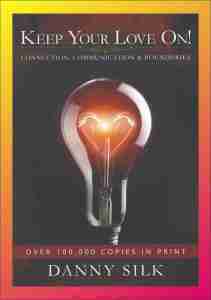 Danny Silk. 2013. Keep Your Love On: Connection, Communication, and Boundaries. Sacramento: Loving On Purpose (publisher).
Danny Silk. 2013. Keep Your Love On: Connection, Communication, and Boundaries. Sacramento: Loving On Purpose (publisher).
Review by Stephen W. Hiemstra
The intrusion of technology into our lives has increased the time spent interacting with machines and reduced the time spent interacting with people. Because developing healthy relationships take time, the reallocation of time away from development of healthy relationships has contributed to declining civility and increasing violence, both at home and in public places. Against this rather bleak environment, an emerging role for the church in these postmodern times has been to teach the basic relational and social skills that can no longer be assumed to exist: enter Danny Silk.
In his book, Keep Your Love On, Danny Silk starts by writing:
“I wrote this book to help people build, strengthen, and heal their relational connections.” (11)
Silk sees three themes as components of healthy relationships—connection, communication, and setting boundaries (12)—and he structures his book around these three themes. Let me turn to each of these themes in turn.
Connection. Silk starts his discussion of connection by distinguishing powerful people from powerless people, writing:
“You need to be a powerful person. Powerful people take responsibility for their lives and choices. Powerful people choose who they want to be with, what they are going to pursue in life, and how they are going to go after it.” (20)
Being powerful is important in relationship because:
“A healthy, lasting relationship can only be built between two people who choose one another and take full responsibility for that choice.” (20)
Powerless people are driven by fear and anxiety in making choices and look to other people to fill in for their perceived lack of power (21-24); powerful people realize that they can only control themselves and do not look to others to solve their problems (25). Consequently, it is powerless people who feel a need to role-play as victims, villains, or rescuers (23), because these roles focus on sharing power that powerless people feel they lack, as Silk writes:
“Powerless people use various tactics, such as getting upset, withdrawing, nagging, ridiculing, pouting, crying, or getting angry, to pressure, manipulate, and punishing one another into keeping their pact” [in being victims, villains, or rescuers] (24).
Real love is a challenge for powerless people because being deeply insecure in themselves they approach relationships as consumers (21) who have trouble being full partners in relationships … Obviously, a lot more can be said about the subject of connection and relationships.
Communication. Silk sees communication as a transaction between the inner and outer life, citing Jesus:
“The good person out of the good treasure of his heart produces good, and the evil person out of his evil treasure produces evil, for out of the abundance of the heart his mouth speaks.” (Luke 6:45 ESV; 81)
Silk sees powerful people insisting on assertive communication where: “My thoughts, feelings, and needs matter and so do yours” (86), not motivated by fear. Powerless people are governed by fear, trying “to hide what is really going on inside” (81), not able or willing to communicate on an equal basis. Instead, powerless people adopt a passive communication style (you matter, I don’t), an aggressive style (I matter, you don’t), or a passive aggressive style (you matter, but not really) (82-84).
Silk offers some helpful advice on dealing with these three powerless, communication styles:
“A powerful assertive communicator responds to a passive person with, ‘What are you going to do about it?’ They respond to an aggressive person with, ‘I can only talk with you when you decide to be respectful.’ And they respond to a passive aggressive person with, ‘We can talk later when you choose to be responsible and tell me what is really going on.’” (87)
Clearly, not everyone starts out as an assertive communicator—Silk himself admits that he started out as a passive communicator married to an aggressive communicator. Because he had to learn to be an assertive communicator paying attention to the needs of others, there is hope for the rest of us.
Boundaries. Silk begins his discussion of boundaries by observing:
“…not everyone should have the same access to you. You are responsible to manage different levels of intimacy, responsibilities, influence, and trust with people in your life.” (124)
Silk starts by recounting several stories about Christians who did not understand this issue of levels of intimacy and counters these stories by observing that “Jesus prioritized certain relationships over others”, as in (most intimate) =>God the Father=>John=>Peter, James, and John=> the twelve disciples=>other disciples=>spectators=>everyone else (125). He goes on to state:
“I love lots of people through my ministry. I counsel them, pray with them, laugh with them, and cry with them. But that’s it. They don’t get the bulk of my time, attention, or money. They don’t get to know my heart and influence my decisions. After our few hours together, I leave those people at church and go home to my family and close friends.” 128-129)
This insight into Silk’s own relationships might come as a shock to many Christians who have trouble establishing such priorities and maintaining them, especially Silk’s comment about the “God-spot” (126), reserved only for God—not spouse, not work, not kids, not political causes, and so on. You get the idea—if not, remember how the Ten Commandments start out:
“I am the LORD your God, who brought you out of the land of Egypt, out of the house of slavery.
“You shall have no other gods before me.
“You shall not make for yourself a carved image, or any likeness of anything that is in heaven above, or that is in the earth beneath, or that is in the water under the earth.
You shall not bow down to them or serve them, for I the LORD your God am a jealous God, visiting the iniquity of the fathers on the children to the third and the fourth generation of those who hate me, but showing steadfast love to thousands of those who love me and keep my commandments.” (Exod 20:2-6)
Danny Silk’s book, Keep Your Love On, is an important resource for church groups, readable, and interesting. Before I had finished the first 20 pages, I started thinking of all the people that I would like to share this book with, especially newlyweds and family members. Read it; discuss it; share it. You will be glad that you did.
August 7, 2016
40. Prayers of a Life in Tension by Stephen W. Hiemstra
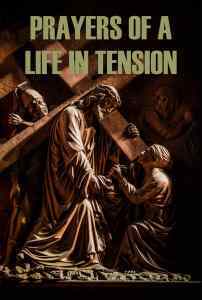 Almighty God,
Almighty God,
In our youth, you gave us the law that our feet would not stumble. In our midlife journey where scholars had knowledge, you have taught us wisdom. In our seniority you rewarded our sacrifices, giving our vineyard and trees great fruit. We praise you and give you the glory. You have swallowed up death forever, wiped away our tears, and set our feet on solid ground setting straight the reproach of our enemies (Isa 25:8). We praise you and give you the glory. Remember now your church in the storms of deprivation, national strife, and scandalous trials. Give your people eyes that see, ears that hear, and leaders that lead where you would have us go. Bless us with your conspicuous presence by the power of your Holy Spirit and in Jesus’ name, Amen.


August 6, 2016
Publicity Online for A Christian Guide to Spirituality
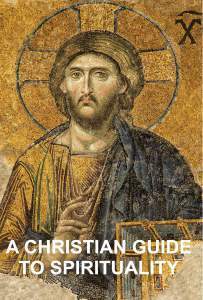
Available on Amazon.com
A Christian Guide to Spirituality is being featured in ads starting today on Facebook and Pinterest, among other places!
FaceBook:
Fb page 1: https://goo.gl/8MOZAr
Fb page 2: https://goo.gl/E30yq2
Pinterest:
https://www.pinterest.com/pin/357614026643941521/
A Christian website:
www.SaintTherse.com.
Note that the Kindle edition will be on sale for 99 cents from August 13 through August 20.
A Christian Guide to Spirituality is available for sale online (Click here).
Una Guía Cristiana a la Espiritualidad se vende por la red aqui (Click here).
My thanks to Fiverr: http://share.fiverr.com/5ffjbrwt204.


August 5, 2016
Iranian New Years
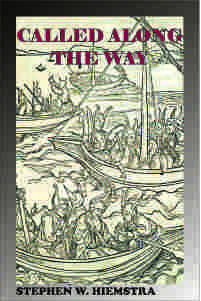 “An excellent wife who can find?
“An excellent wife who can find?
She is far more precious than jewels.”
(Prov 31:10)
Iranian New Years
By Stephen W. Hiemstra
My experience of living off campus during my years at Cornell University convinced me to return to live in the graduate dormitory, Owen Hall, when I started my doctoral program at Michigan State University in the fall of 1979. Owen Hall housed single students and most of them were international students, in part, because American typically chose to live off campus after a brief stay in the dorm. Being both American and a doctoral candidate set me apart, I quickly learned, because most students in the dorm only sought a masters degree and quickly graduated.
Because my friends in Owen Hall were mostly foreign students, I was frequently invited to foreign student association parties, including the Turkish club (the best food), African club, Brazilian club (the wildest parties), and the European club. Having studied in Germany, the European club was my favorite and I had many European friends, but the international students were not parochial and typical outings on the weekend included students from all over. Over time, my best friends were Senegalese, Jordanians, Turks, Nepalese, and Iranian—my few American friends were mostly from my own department (agricultural economics)—but the largest number of my friends were Iranian.
My Iranian connections grew over time, in part, because the Iranians had an active soccer team that I practiced with on Sunday afternoons and, in part, because following the Iranian Revolution many Iranian students stayed in the United States for additional graduate work, including doctoral studies. Doctoral candidates in Owen Hall tended to gravitate towards one another, perhaps, because they were simply around longer.
Owen Hall had a nasty habit of forcing residents out of the dorm during the summer to make room for the summer students which meant that we were forced to live off campus, which was a hardship for those of us without cars because we had to walk long distances to daily classes and to buy necessities, like groceries. Because the single rooms in the apartment complexes filled up quickly, the summer hardship included taking on a roommate—something unnecessary in Owen Hall. One summer I shared an apartment with a Turkish friend, Halit, but the following summer I had an Iranian roommate named Parviz, who was a doctoral candidate in electrical engineering and owned a car.
Parviz and I reserved a room early in the spring of 1982 and, because we did not know each other well, he invited me to join him for a Noruz party [1] in Detroit. In the days before the party, the Iranians in the dorm were treating me rather shamefully—someone spread a rumor that I was a CIA agent because I had started studying Parsi [2] and because I knew too much about foreign affairs [3]. Meanwhile, Parviz and some of my other friends kept giving me a hard time about looking for a woman interested in long term relationship—I actually had a premonition that I would meet my future wife at this Noruz party and her name would be Maryam!
When Noruz came, Parviz and I drove to Detroit arriving early. Unlike American New Year’s parties, Noruz is more formal, involving traditional Iranian food, candies, ceremonies, and whole families, so I wore a sport’s jacket and tie. To my surprise, I knew quite a few Iranians from East Lansing who, like us, had driven an hour and a half to attend this celebration. Knowing people was important because in Iranian culture it is considered rude to introduce yourself and introductions must be made by common friends, who offer a kind of recommendation to both parties and fill in details about the person that would normally not be easy to disclose.
Later in the evening, a beautiful woman, dressed in a black and white striped blouse with a black skirt and a big smile, walked in with her sister. I asked a friend of mine, Zuheyla, who this was and she asked around, reporting back that the sister’s name was Azar and the woman’s name was Maryam. Acquainted with both of us, Zuheyla introduced us and wandered off to leave us alone. After spending time together at the party, Parviz suggested that the four of us retreat to Greek Town and get better acquainted. The following week, we invited Maryam and Azar to East Lansing for a double date. After that, I invited Maryam out on my own and traveled to Detroit by bus to see her.
In April, my younger cousin, Ruth, got married in New Jersey and threw a large wedding party. At the party, the Hiemstra cousins had a table to themselves along with other members of the family. Over the course of the dinner, the topic shifted to me—as the oldest cousin, why wasn’t I married yet? I got rather irritated and shot back that what self-respecting woman would date an old guy (27) who did not have a job or even own a car? At the time, most of my American friends already had a car, a house, and a bunch of kids, and were working on a second or third marriage. Many international students, especially Iranians, tended to be a bit older and to delay marriage for financial reasons.
My dad heard about my complaint, took me aside later that evening and promised to lend me money for a car. The following week back at home in Virginia, he helped me purchase a new Honda Civic, which cost about $6,000–it was an ugly brown color, but it ran like a charm. When I returned to school, I found that my car quickly increased my circle of friends in Owen Hall, but, more importantly, I started driving after church on Sundays to Detroit to see Maryam.
[1] Iranian New Years is always March 31.
[2] My friends routinely spoke in Parsi in front of me and I got tired of not being able to understand what was being said.
[3] I regularly watched the evening news on television and read the Wall Street Journal.


August 2, 2016
Hellerman: Church Family is Serious Business
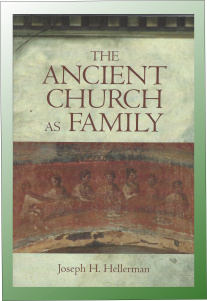 Joseph H. Hellerman. 2001. The Ancient Church as Family. Minneapolis: Fortress Press.
Joseph H. Hellerman. 2001. The Ancient Church as Family. Minneapolis: Fortress Press.
Review by Stephen W. Hiemstra
Perhaps one of the most challenging tasks of faithful theologians in our time is to determine cultural critiques of the first century are valid, supporting improved exegious, and which are invalid, adding nothing to our knowledge of scripture. Knowledge about things like Jesus’ social position and relationship to friends and family is helpful because scripture is laconic, providing a bare minimum of detail, when we frequently want to know more—who is the real Jesus?
Joseph Hellerman’s book, The Ancient Church as Family, begins with an intriguing question: what explains “the marked growth of the early Christian movement?” (1) The answer to this question that he offers is that the early church was a surrogate family which:
“…may be defined as a social group whose members related to one another neither by birth nor by marriage, but who nevertheless (a) employ kinship terminology to describe group relationships and (b) expect family-like behavior to characterize interactions among group members.” (2)
This is an intriguing hypothesis because we observe sibling terminology being used by Peter even on the Day of Pentecost (Acts 1:16)—before the church had been organized—and it is used throughout the writings of Paul (e.g. 1 Cor 1:10). We also note that referring to God as father (e.g. Matthew 6:9 and John 17:1) is also consistent with the idea that we are all brothers and sisters in the faith. Furthermore, the early church shared resources, acting like a family in taking care of one another (Acts 2:44-45).
The Christian church was not the only group out there in the first century—why was it so much more successful? Hellerman sees first century groups as having these common characteristics—they were voluntary (5), had a religious orientation (7), and shared common meals (8). Only some groups were also trans-local (9), socially inclusive (10), structurally egalitarian (11), and focused on study (13). The early church stood out in opposing the dominant culture (14), having an exclusive allegiance (20), and emphasizing family (21). Of these characteristics, the functioning of the church as a surrogate family was culturally the most distinctive.
If the early church functioned as a family, then what sort of family are we talking about?
Hellerman argues that the dominate template for family in the first century was the “patrilineal kinship group” (PKG), which differs in significant ways from the traditional American family. While the American family is viewed in individualist, relational terms, the PKG viewed marriage as:
“a legal and social contract between two families for (1) the promotion of the status of each [family], (2) the production of legitimate offspring, and (3) appropriate preservation and transferal of property to the next generation.” (31)
A key distinctive for the PKG is that siblings, not spouses, are where one seeks emotional support (36). Hellerman writes:
“frequently brother-sister relationships [have] an almost romantic quality. Even into later life, the men with whom women feel most comfortable and upon whom they can most depend are their brothers. Brothers remain their sisters’ primary source of companionship, advice, and defense.” (37)
Treachery within the PKG is deepest therefore when, like with Cain and Able, it interferes with expected sibling intimacy, not marital intimacy (39). Sibling solidarity is therefore minimally to involve protection of family honor (over even things like honesty) and sharing of resources (41). And, of course, the kingpin in the PKG is the role of the patriarchal father (30). Therefore, if the church is a family, then we are all brothers and sisters in the faith under one father—God.
Hellerman spends a great deal of time and effort convincingly validating his hypothesis from biblical (especially Paul) and early church sources, including Clement of Rome, Ignatius of Antioch, Justin Martyr, Clement of Alexandria, Irenaeus, Tertullian, and Cyprian. For example, he notes in Paul’s letters 118 occurrences of sibling terminology, 40 occurrences of father terminology, and 14 instances of inheritance terminology (92), which is used primarily to reinforce social order in the churches (92-93). What is interesting is that, contrary to the expected linguistic strategy of appealing to PKG to reinforce the hierarchical structure of Roman society (97), Paul employs “homonoia rhetoric” to reinforce an egalitarian structure typical of his churches (113). Hellerman writes:
“Paul draws upon sibling terminology in order to (1) elicit expression of generalized reciprocity, (2) provide assurance of honest administration of the funds, and (3) challenge his readers to respond in a manner worthy of the sibling bond that they share with other Christians who have already demonstrated their generosity.” (113)
This is an important finding, in part, because the prevailing interest among many writers today is to allege that the PKG model is used rhetorically to promote hierarchy at the expense of socially disadvantaged groups. Hellerman disagrees writing:
“those who had the most to gain from the image of the church as a family were the poor, the hungry, the enslaved, the imprisoned, the orphans, and the widows. For brother-sister terminology in antiquity had nothing to with hierarchy, power, and privilege, but everything to do with equality, solidarity, and generalized reciprocity.” (221)
Hellerman is a professor of New Testament and the history of Christianity at Biola University, La Mirada, California and Pastor at Oceanside Christian Fellowship, El Segundo, California. He writes in 7 chapters:
Christianity in Its Social Environment.
Mediterranean Family Systems: Structure and Relationships.
Origins of the Surrogate Kin Group Idea
The Communities of Paul of Tarsus
Second-Century Christian Writers
North African Christianity
Summary and Evaluation.
These chapters are preceded by a preface and followed abbreviations, notes, bibliography and an index.
Johseph Hellerman’s book, The Ancient Church as Family, provides important background on the use of family terminology in the New Testament and the early Christian church, serving as an important apologetic in meeting postmodern challenges to the role of the church in society. While seminary students and pastors are the obvious audience for this book, a wide range of others will have an interest. The book is both accessible and engaging—I doubt that I will ever read the Bible in quite the same way.
“But you are not to be called rabbi, for you have one teacher, and you are all brothers. And call no man your father on earth, for you have one Father, who is in heaven.” (Matt 23:8-9)
July 31, 2016
39. Prayers of a Life in Tension by Stephen W. Hiemstra
 Blessed Lord Jesus,
Blessed Lord Jesus,
Place your hedge of protection around me, Lord, for I am confused and afraid. My strength fails me; my body aches; my children are yet lost; and it is night—when jackals run freely and the hyena contends with the lion over much carrion.Have mercy on the children, Lord—for they are yours and yours alone. Spare me their voices in the night; spare me the weeping of souls forgotten and lost—be they familiar. And near. And dear. For the workman cannot save from folly nor tell what ears will not hear. Yet, you God hear our prayers; your blessings blossom beyond measure daily. Since the days of my youth, you have comforted me and given me life and hope and joy—to sing and dance and clap hands for the joy of your salvation which is near. But now, let me rest securely til the new day awaits in morning sun with blessings and hope of rest with you, now and always. In the name of the Father, the Son, and the Holy Spirit, Amen.


July 29, 2016
Unprepared
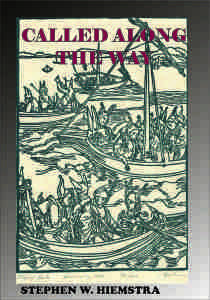 “My Father, if it be possible, let this cup pass from me;
“My Father, if it be possible, let this cup pass from me;
nevertheless, not as I will, but as you will.” (Matt 26:39)
Unprepared
By Stephen W. Hiemstra
In graduate school, I met and dated quite a few women, particularly during my time at Cornell University. Ironically, Cornell had just gone “co-ed” during my time there so the girls I met were often quite choosy and many guys I knew had very little success dating. But since my definition of success was developing a more permanent relationship, my frustration with dating grew to be a major theme because the women I dated did not seem to value relationship, except within limited bounds. Offering a 100 percent commitment and finding a 20 percent commitment being offered in return left me feeling used and abused.
Commitment, of course, meant that I needed to make some adjustments—expecting to meet “miss right” meant that I had to become “mister right”. In the 1970s as now, “mister right” had to have the financial capacity to support a family and not everyone was willing to date someone with great expectations. With rapid inflation, high energy prices, and a deteriorating job market, my economics training suggested that the package for “miss right” also needed now to include a serious career, which suggested that dating attractive younger women was risky because a serious career required more commitment than many people—male or female—were willing to invest.
Those women willing to invest the time and energy in a career expressed less interest in men and had much higher expectations, which posed a real problem in dating. The problem was simple—career expectations for men were going down with a weak economy and competition from women while the expectations of attractive women with career potential of eligible men were going up. If women’s expectations were unrealistically high because of the historically unique nature of this problem, then the dating market need not yield a solution—a disconnect would emerge.[1]
This disconnect was obvious to me from the quirky responses I received from American women that I dated. One woman I dated broke up with me because she wanted to spend more time with the rowing team; another women who I dated was still in the process of divorce; still another wanted to meet me and bring along half-a-dozen friends from her department; another was engaged but wanted just to hang out with me until she got married. By the time I left Cornell, I resolved not to date American women because of all the relational confusion and the pain that it caused. It was simply much easier to date foreign students who were more committed to and conventional in their relational expectations.
During the late 1970s, I had a serious relationship (more than a year) with a foreign student—let me call her Betsy (not her name) and let me be vague about time and place and nationality so that I can speak more freely. Betsy and I worked hard to find a financial path to marriage while continuing our education. While that path never materialized, another problem emerged to threw our relationship in disarray.
This disarray began when Betsy and I traveled to her hometown to visit her mother, where Betsy put me up for the night with a friend. In the morning when Betsy came to pick me up, she looked like someone who had been beaten up—unkept and shaken—and she had been. At this point, she shared with me that she was an only child and her mother had had her at a young age out of wedlock; her untimely birth caused a scandal so her parents never married; and in the years that followed her mother became an alcoholic and blamed Betsy for all her troubles. When her mother learned that Betsy was dating an American, she went nuts and beat her up—as a consequence, my introduction to mom never took place.
Unprepared to deal with physical abuse and alcoholism, I quietly freaked out. I had never the financial nor the emotional resources to offer Betsy the shelter she needed. I was no use at all—useless, helpless, and unable to process what was happening. I offered her the support that I could, but I was clearly out of my league, having hit my emotional threshold. Sheltered in family and church, I had never learned to deal with abuse, addiction, or a chronic illness—the bandwidth on my empathy was too limited and I withdrew emotionally. Over the next few months, our relationship melted away, like an ice cream cone left too long in the sun, and we eventually broke up.
In my shame, I started reading about alcoholism, especially Howard Clinebell’s Understanding and Counseling the Alcoholic (1978). I learned to recognize the signs of alcoholism, some of the contributing factors, and the spiritual nature of the problem. More than simply learning the details of the problem and of various groups, like Alcoholic Anonymous, that have attempted to deal with it, I gained an appreciation for the need to study brokenness before attempting to deal with it—a lesson which has served me well over the years. Clinebell’s book was the first counseling book that I ever read; interestingly, it is still in use and is considered a classic in counseling addicts.
The spiritual side of alcoholism is well known. For me, the story of Jesus’ prayer at Gethsemane is most instructive—when we are faced with a difficult pain or decision, do we turn to God in our hour of need or do we turn into our pain? If we turn to God, our faith is strengthened and he promises to walk with us through our afflictions; if we turn into our pain, then we are easily deceived into thinking that our drugs of choice—food, liquor, sex, work, or narcotics—are part of the solution, not part of the problem. This confusion over problems and solutions means that the alcoholic cannot be helped until this twisted thinking is exposed for what it is—Satan’s bondage.
While I was never myself an alcoholic, alcoholism runs in parts of my mother’s family, which suggests that I may be genetically predisposed. Since this experience I have felt fortunate to have learned enough about the problem of alcoholism in time to learn to avoid it—not everyone I know has been so fortunate. During this period of my life, I began avoiding hard liquor and, significantly, I made a serious effort to enter the mission field, applying for a position in Latin America with the Reformed Church of America.
Reference
Clinebell, Howard J. Jr. 1978. Understanding and Counseling the Alcoholic: Through Religion and Psychology. Nashville: Abingdon.
[1] Evidence of this disconnect between the expectations of men and women was everywhere to be seen, but it was most obvious in the high divorce rates during this period. Many of my male colleagues in graduate school had married their high school sweet-hearts who supported them both financially and emotionally during graduate school only to divorce on graduation—evidence that the guys were taking advantage of their new earning power to divorce.


July 26, 2016
Duckett Designs Websites; Introduces CSS
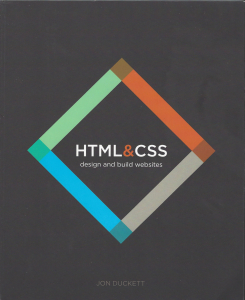 Jon Duckett. 2011. HTML & CSS: Design and Build Websites. Indianapolis: John Wiley and Sons.
Jon Duckett. 2011. HTML & CSS: Design and Build Websites. Indianapolis: John Wiley and Sons.
Review by Stephen W. Hiemstra
Over the years, I have purchased an office full of books about computers, programming languages, operating systems, and social media. Most of these books have nothing to do with another passion of mine, which is writing and publishing. Jon Duckett’s book, HTML & CSS, is decidedly different, falling squarely in the middle of these two fields.
For the uninitiated, HTML is short for hypertext markup language and CSS is short for cascading style sheets. These two scripting languages come together when the task at hand is designing and programming out high-quality, well-designed websites. Both programming languages may be somewhat invisible—under-the-hood—if you are like me, and create webpages in Word and simply save the result as an *.htm file.
For the observant, this design focus is obvious from the high quality paper-stock employed in printing Duckett’s text. The paper used in color printing is often heavier than regular printed pages, in part, so the colors will not bleed through one side of the page to the other, a problem most obvious in newspaper print. High quality paper-stock also gives a book a certain nonverbal gravitas that is impossible to reproduce with other paper. If you are clueless about all that, the cover sports a stunning design, which reinforces the design focus—this book is definitely coffee-table ready, setting it apart from other computer books.
The design focus of Duckette’s book comes as a surprise because hypertext is best known for being somewhat plain, allowing relatively few variations on basic formats. The old image of hypertext is kind of like Henry Ford’s admonition, “you can have any color you want, provided you want black”. Hypertext has historically not offered text options typically found in other print media. I was pleasantly surprised to read explanations on how to download alternative typefaces more typically found in topography books. Now, for example, things like first letter variations (something like a drop letter) can be rendered directly (289). With the introduction of CSS, hypertext is starting to allow a great deal more flexibility.
Duckette writes to communicate designing his book with this in mind. He focuses on the tags most frequently used in programming, structures the book around HTML, CSS, and practical examples, and discusses features following the way that people access the internet: browsers, web services, devices, and screen-readers (5-7). The book is organized into 19 chapters, preceded by an introduction and followed by an index:
Introduction
1. Structure.
2. Text.
3. Lists.
4. Links.
5. Images.
6. Tables.
7. Forms.
8. Extra Markup.
9. Flash, Video, and Audio.
10. Introducing CSS.
11. Color.
12. Text.
13. Boxes.
14. Lists, Tables, and Forms.
15. Layout.
16. Images.
17. HTMLS Layout.
18. Process and Design.
19. Practical Information.
Index.
The codes examples used in the book can be downloaded at: http://www.HTMLandCSSBook.com/code.
Jon Duckett’s book, HTML & CSS, provides an accessible introduction to HTML and CSS for both beginning website designers and those looking for a reference guide. The examples are easy to follow and he directs the reader to helpful resources online.
July 24, 2016
38. Prayers for a Life in Tension by Stephen W. Hiemstra
 God of All Wonders,
God of All Wonders,
The heavens declare your glory and we are witnesses to it. Our eyes have seen and our ears have heard of the splendor of your creation.
We give testimony to the love that you showered on us when Jesus died a cruel death in our place and for our salvation he rose from the dead. How can our lips then be silent? We are citizens of heaven and sojourners in this land. Teach us, Lord, to testify in humility to your love for us and to abstain from the passions of this life that wage war on our souls and to share your passion for our lives and for our salvation with gentleness and respect. If we then should suffer, then may it be for your kingdom and your righteousness and not for an evil that we ourselves have done. In the power of your Holy Spirit, help us to be salt and light. In Jesus’ precious name and for his glory. Amen.











